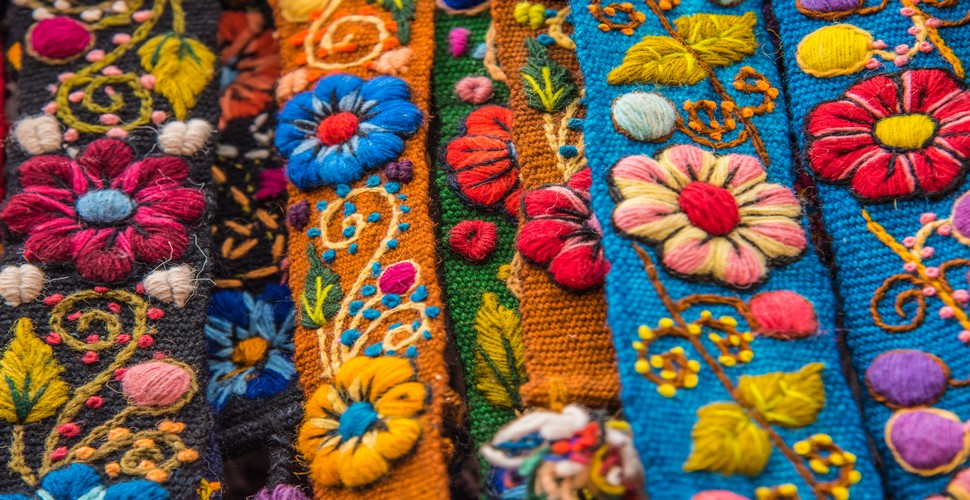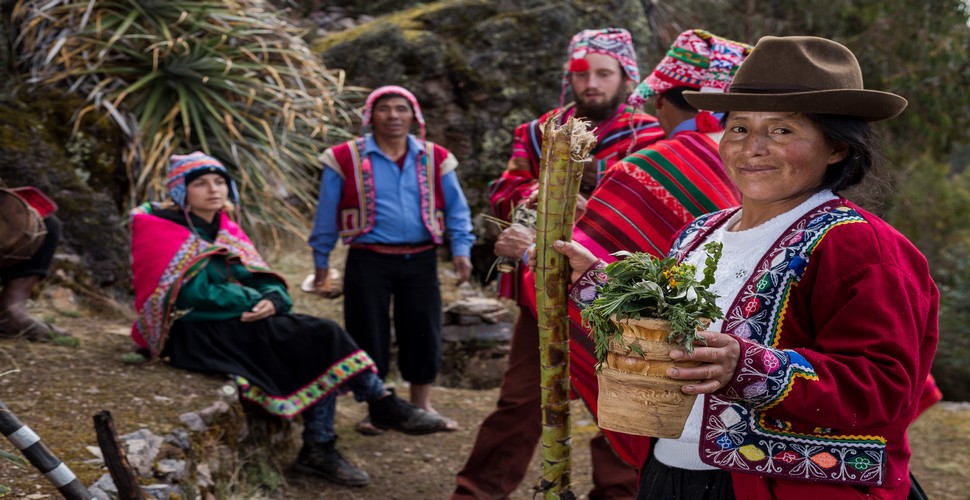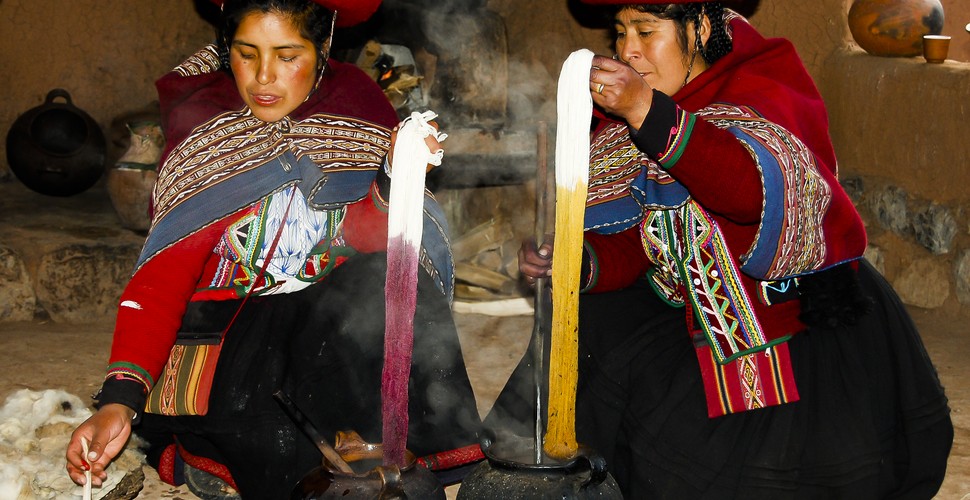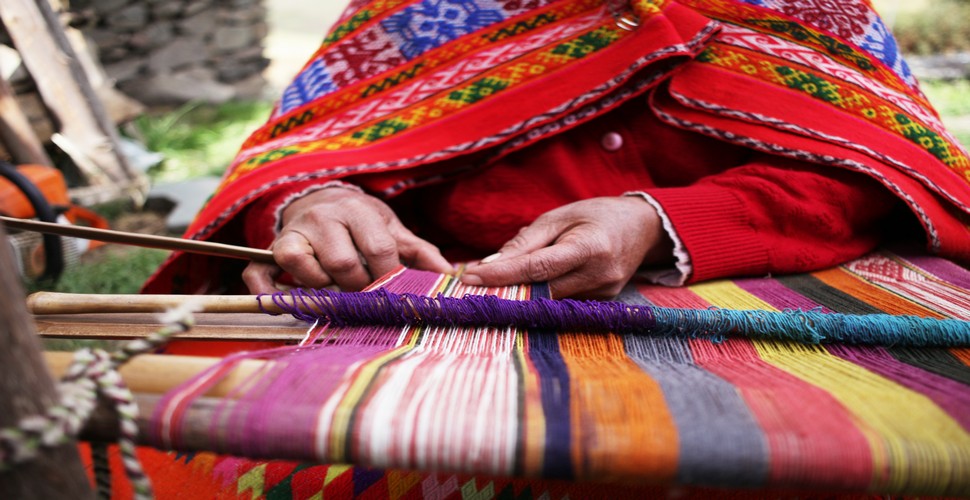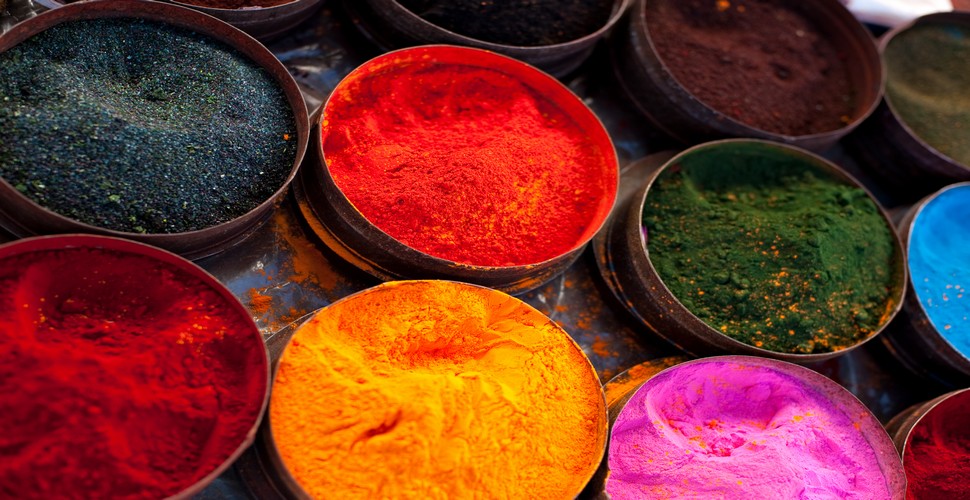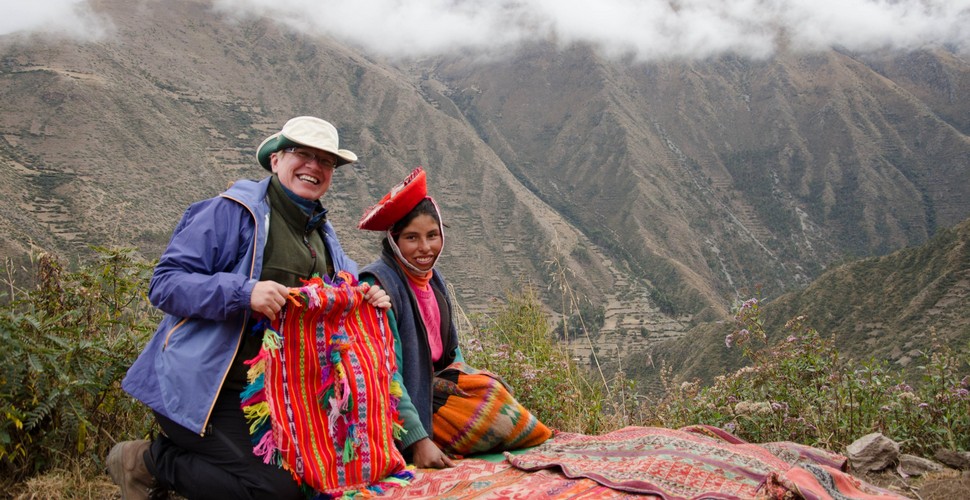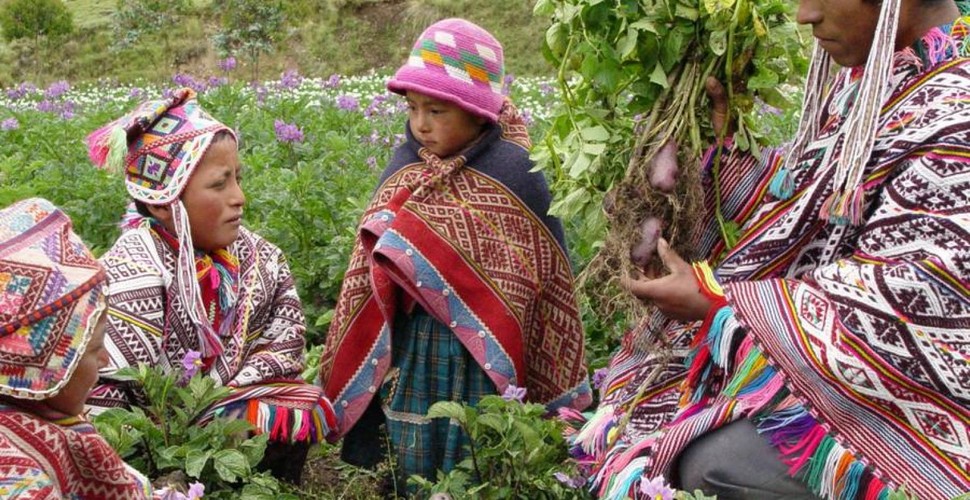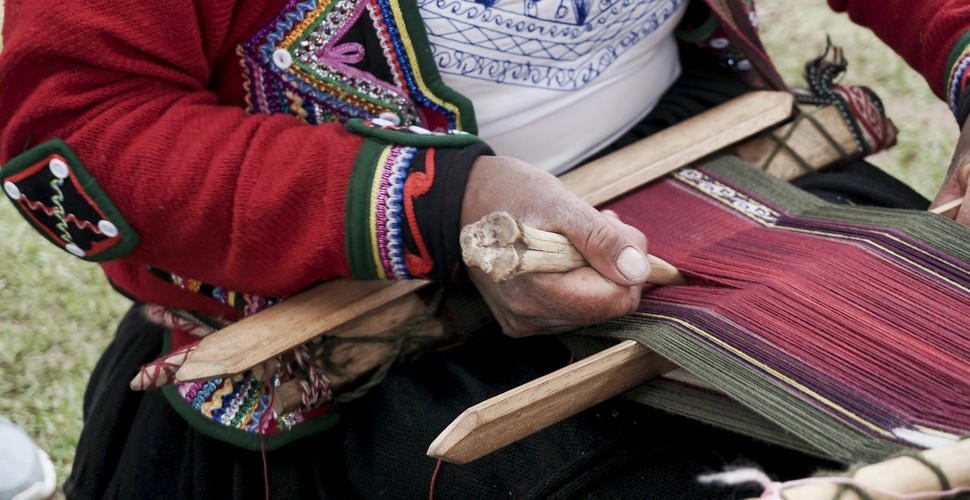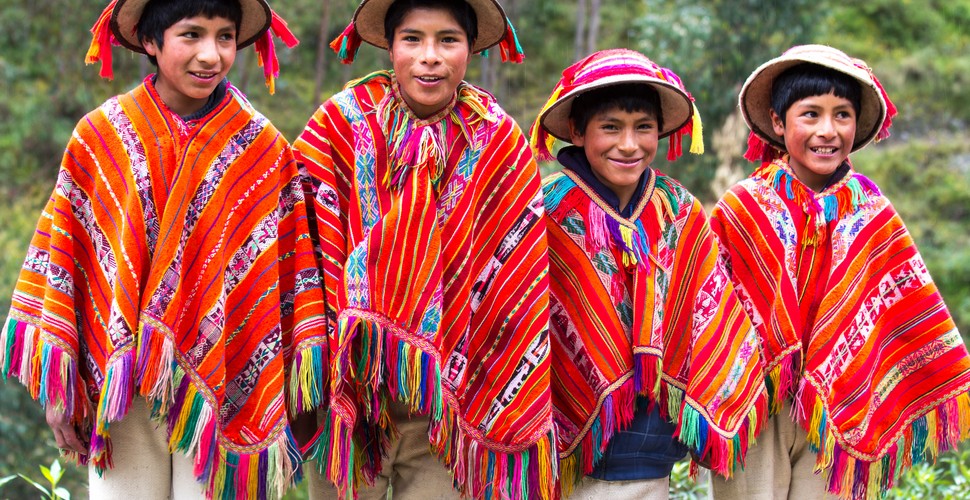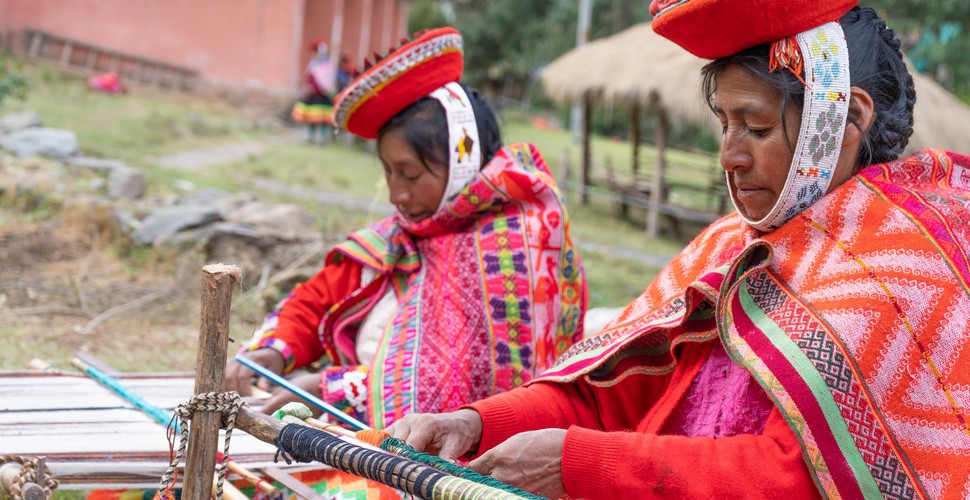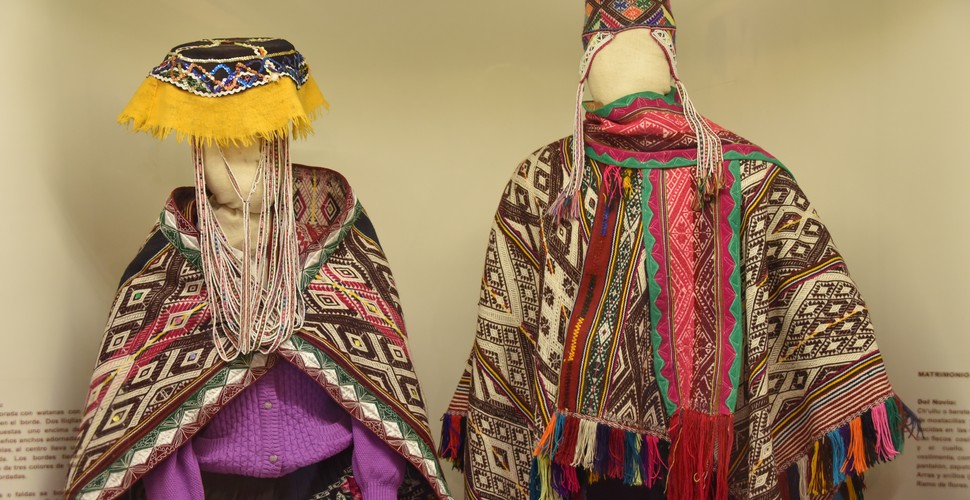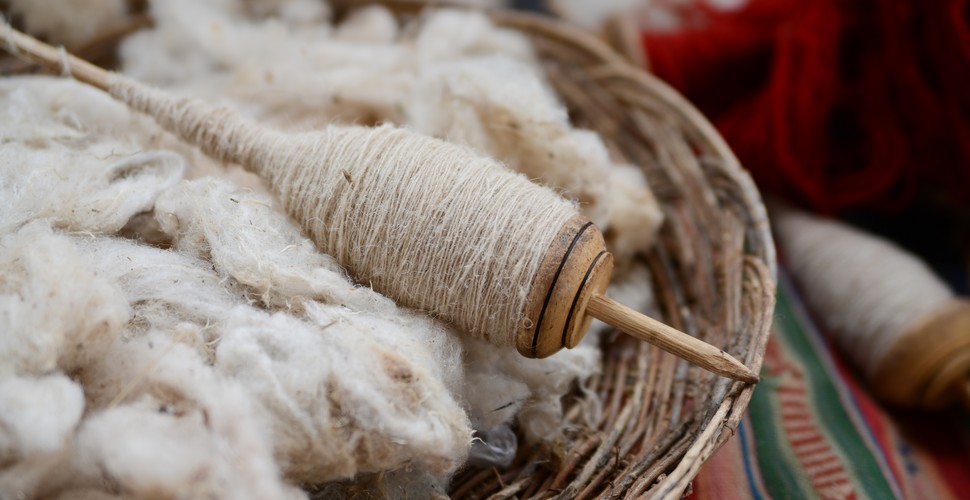

Claire Dean
Travel in South America is a joy to behold. The rich variety of destinations, experiences, landscapes and geography fascinated me so much, that I chose to relocate here, over 20 years ago! The best thing I ever did! Allow me to share my knowledge and passion for Central and South America with you and help you plan your holiday of a lifetime!

Peruvian Textiles
Written by:Claire Dean
Last Update: 2025-01-15
Peru's textiles are prized around the world, which makes sense considering that the weaving tradition in the country is over 4,000 years old. Peru's best weaving culture is found in Cusco, Chinchero, and Huancayo. Textiles are made using the wool of llamas, alpacas and vicuñas, and the weavings are soaked into dyes made from flowers, roots, and leaves to create these magnificent works of art. If you want to find some of the highest-quality textiles in the world, then Peru is the perfect destination for you! Andean textiles are some of the most original, quality textiles made from the finest alpaca yarns, using techniques passed down the centuries.
Peruvian Woven Belts
Textiles can be found in museums and at markets, where talented weavers exhibit their products. Local workshops often have weaving demonstrations which will help you understand the tremendous skill that goes into creating each piece. Textile tours are an interesting way to become acquainted with one of Peru's most traditional and timeless art forms.
Peruvian textiles have an incredibly rich tradition, with museums all around Peru featuring exquisite textiles from ancient cultures. Pre-Incan cultures, such as the Nazca, Paracas and the Moches, had rich textile traditions; in these cultures, textiles were both highly valued and extremely useful. Dating from around 600 BC, these textiles were used to wrap around mummies in layer after layer of ornate, finely woven cloth.
Passed down through the Generations
The Best Ways To Find Authentic Textiles
One of the best ways to find the best textiles and weavings is to get entirely off the beaten path. Perhaps what weaves the diverse cultures of Peru together in such a unique way are the communities of artisans in Peru. From the Amazon to the coast, skilled craftspeople preserve the country's history, values, and vibrancy for life in traditional art. Look at these communities in the Cusco area that continue to produce fine Andean textiles of the highest level!
Dyeing Alpaca Wool
The back strap loom used in the Andes today dates from pre-Inca times; today's weavers use very similar technology to that of their ancestors using bone or wooden pegs, shuttles, and rods with the looms. The Incas were famous for their assimilation of weaving techniques and they improved the traditions of each civilization they conquered. While the Incas will always be most famous for their architectural prowess, their ceramics and textiles were also exquisite. It is said that the Inca only wore each cape once and that he had a storeroom of them at his command. When the Spanish arrived, their thirst for gold and only gold caused them to gloss over the importance of the textile tradition that already existed in Peru. However, the making of Peruvian textiles continued as it had for centuries before the arrival of the Incas and the Spanish. The knowledge of weaving was shared by the Andean method of person-to-person communication, tradition and by watching and practicing. Today, the traditions surrounding Peruvian textiles are undergoing a revival in Andean communities. Textiles are given as gifts in courtship, are important elements in marriage and coming of age ceremonies, and are present during baptism and communion celebrations.
Loom Weaving
The Andean Weaving process
Andean weaving, embodies the living history and culture of the Peruvian highlands, and are characterized by the intricate patterns found in traditional Peruvian textiles. Exploring the personal histories of the Quechua people who sustain this tradition today, you can witness how they weave extraordinary amounts of cloth on simple backstrap looms in the same way their forebears have done for thousands of years, to make items of clothing, rugs, bedcovers, potato sacks, hunting slings, and sacrificial fabrics for both their villages and for interested tourists. How patterns represent the geography and history of the region, by telling a story within the weavings and how the traditional natural materials and colors enhance the value of the work.
Natural Dyes
Weaving Communities Near Cusco
The Mapacho Valley
Indigenous women in the Mapacho Valley create some of the highest quality Andean textiles seen in the country. In Bon Bon, Parabamba, and Chimur, you'll find colorful fabrics dyed naturally, and Weavers collect plants native to the region to stain the fibers. Within each textile are stories of animals, natural wonders, and other tales that have been around since their ancestors. Take time to stop and listen to the women or at least observe the skilled designs. It just may be a life-changing experience.
Parabamba
The Potato Park
In the mountains above the Sacred Valley of Peru lies an expansive territory where communities continue to live a traditional lifestyle. The Potato Park is a fantastic place to visit for the day if you want to learn about traditional agriculture and weaving, go hiking or learn about Andean traditions and medicinal plants. The Potato Park is a bio-cultural reserve in the highlands above the Sacred Valley of The Incas. Though it has a strange name, it is a great place to visit for those interested in learning about Andean traditions. More than 6,000 people live within the park's boundaries, spread throughout twelve different communities. Though some communities are more traditional than others, almost everybody in this park is a subsistence farmer, living in the same ways as their ancestors. They collect wool from their llamas, alpacas, and sheep to make stunning garments colored with natural dies.
Exchanging Potatoes in The Potato Park
Chinchero
Not far from Cusco city, Chinchero is a great village to discover more about Andean weaving. The Centro de Textiles Tradicionales del Cusco (The Cusco Textile Center) is one organization that helps bring weavers together by empowering traditional weavers. The artisans receive training and a platform to sell their art. Nilda Callañaupa Alvarez, who helped start the collective, has written several books about weavers in the Sacred Valley, including one about the weavers of Chinchero. Chinchero is also a market town, and you can visit some of the most traditional markets in the region.
Chinchero Weaver
Huilloc
Huilloc and Patacancha (see below) are the direct native descendants of the Inca lineage, who have preserved the culture, tradition, and local ways of life for more than five hundred years. The inhabitants of Huilloc offer immersive experiences into the traditional ways of Andean life, including weaving, where the textile works and the exquisite color of their clothes stand out. Learn about the ancient knitting techniques in Huilloc. With the help of an interpreter, you may watch how women use special tools to create beautiful garments with typical designs, and you may also participate in this work under their supervision. Weaving is an integral part of the community, and you can purchase authentic products. Huilloc offers other immersive homestay activities, including farming, music, dance, and traditional gastronomy.
Huilloc
Patacancha
Four thousand two hundred meters above sea level tucked away in the Andes, is the village of Patacancha. Within the town is a small community of women weavers. These Peruvian weavers have mastered skills passed on through generations, but with the rise of cheaper, machine-made alternatives, they're struggling to keep their Inca traditions alive. A demonstration will take you through the many stages of weaving. First, get to know the wool and feel the difference between llama, alpaca, and vicuña wool. Each one, respectively softer than the next. Doing this helps make sense of the price differences between the final garments in the markets.
Patacancha Weavers
The Centro de Textiles Tradicionales del Cusco
The Centro de Textiles Tradicionales del Cusco (CTTC) is a nonprofit organization established in 1996 by Andean weavers and their supporters. The mission of the Center is to aid in the survival of Cusqueñan textile traditions and to support the indigenous people who create them. The Center works with ten weaving communities in the Cusco region of Peru on a fair-trade basis to help rescue traditions and promote the weavers and their work. The Centro de Textiles Tradicionales del Cusco ensures a future for Cusqueñan textile traditions through community organization, workshops, educational opportunities, and more. Visit their store on Av el Sol to find authentic Peruvian textiles for sale from these weaving communities.
The Centro de Textiles Tradicionales del Cusco Store in Cusco
Threads of Peru
Threads of Peru is a nonprofit organization that connects the world to Peru's handcrafted treasures, helping preserve ancient craft techniques and empower indigenous artisans. Threads of Peru educates the world about the unique beauty and cultural significance of the Quechua people and their textile traditions via their website, community tours, and international sales. They promote sustainable economic and social development solutions that contribute to the health, education, and well-being of indigenous weavers and their families. Aside from minimal administration and operations costs, all profits from textile sales are reinvested in the communities, focusing on projects such as weaving capacitation and skill-building, business and administrative skill-building, family planning and nutrition, self-organization, and cultural exchange.
Some of the best textiles in the world can be found in the Cusco region of Peru. Visit a community directly, or check out one of the NGOs dedicated to preserving the cultural identity of Peru via its weaving traditions. Find out more at Valencia Travel for the best communities to buy authentic textiles and which tours you can take to weaving communities in the Andean region, to experience this incredible cultural activity first-hand.


